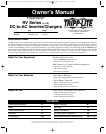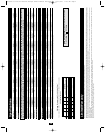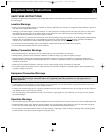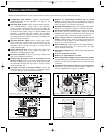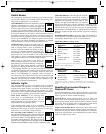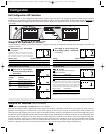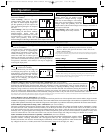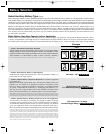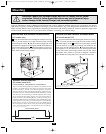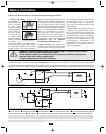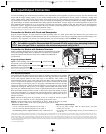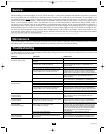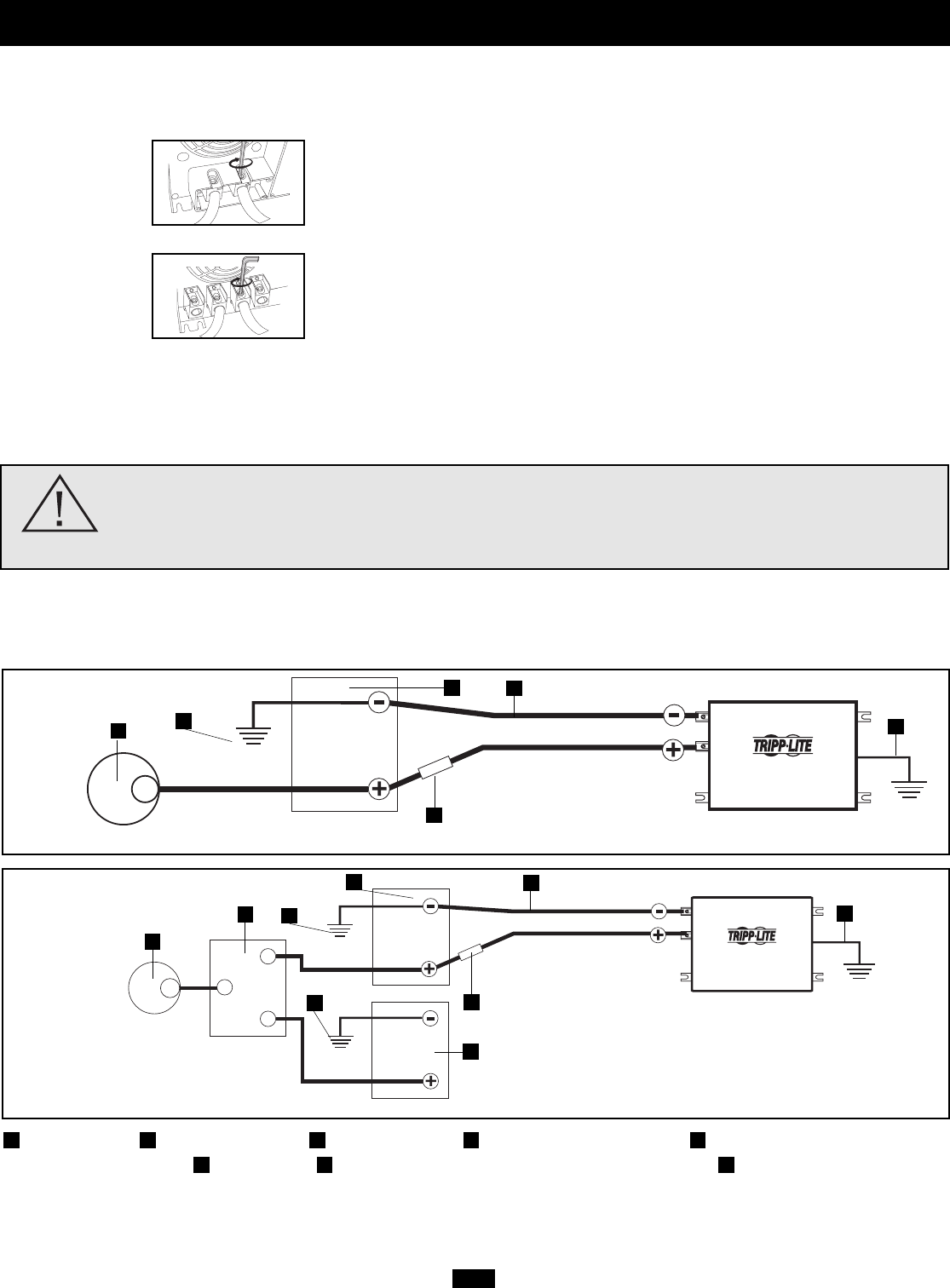
10R
• Connect DC Wiring: Though your
Inverter/Charger is a
high-efficiency con-
verter of electricity,
its rated output
capacity is limited by
the length and gauge
of the cabling run-
ning from the bat-
tery to the unit. Use
the shortest length
and largest diameter
cabling (maximum
2/0 gauge) to fit
your Inverter/Charger’s DC Input terminals.
Shorter and heavier gauge cabling reduces
DC voltage drop and allows for maximum
transfer of current. Your Inverter/Charger is
capable of delivering peak wattage at up to
200% of its rated continuous wattage output
for brief periods of time. See Specifications
page for details. Heavier gauge cabling
should be used when continuously operating
heavy draw equipment under these conditions.
Tighten your Inverter/Charger and battery
terminals to approximately 3.5 Newton-
meters of torque to create an efficient con-
nection and to prevent excessive heating at
this connection. Insufficient tightening of
the terminals could void your warranty. See
Specifications page for Minimum
Recommended Cable Sizing Chart.
• Connect Ground: Using a #8 AWG wire
or larger directly connect the Main Ground
Lug to the vehicle’s chassis or earth ground.
See the Feature Identification section to locate
the Main Ground Lug on your specific
Inverter/Charger model. All installations
must comply with national and local codes
and ordinances.
• Connect Fuse: NEC (National Electrical
Code) article 551 requires that you connect
all of your Inverter/Charger’s positive DC
Terminals directly to a UL-listed fuse(s) and
fuse block(s) within 18 inches of the battery.
The fuse’s rating must equal or exceed the
Minimum DC Fuse Rating listed in your
Inverter/Charger’s specifications. See
Specifications for fuse and fuse block rec-
ommendations. See diagrams below for
proper fuse placement.
Battery Connection
Vehicular
Your Inverter/Charger’s Nominal DC Input Voltage must match the voltage of your battery or batteries—12 Volts in most vehicular applications.
It is possible to connect your Inverter/Charger to the main battery within your vehicle’s electrical system. In most vehicles, the Inverter/Charger will be
connected to one or more dedicated auxiliary (house) batteries which are isolated from the drive system to prevent possible draining of the main battery.
12 Volt Inverter/Charger
12 Volts
12 Volts
3
5
12 Volt Main Battery Connection
12 Volt Alternator Vehicle Battery Ground 12 Volt Main Battery 12 Volt Auxiliary (House) Battery UL-Listed Fuse & Fuse Block (mounted
within 18 inches of the battery) Battery Isolator Large Diameter Cabling, Maximum 2/0 Gauge to Fit Terminals 8 AWG (minimum) Ground Wire
NOTE: Select models include two positive and two negative DC terminals. Using the same connection architecture illustrated in the diagrams, run two 2/0 gauge cables from the Inverter/Charger’s
two negative terminals to the battery’s single negative terminal; run two 2/0 gauge cables from the Inverter/Charger’s two positive terminals, through two UL-listed fuses and fuse blocks, or equivalent,
(one on each cable), to the battery’s single positive terminal. Use the equivalent of two 2/0 cables in all other connections within the battery system. Connection to Two DC Terminals: It is acceptable
to use two cables to connect your battery to only one positive and one negative DC terminal, however, your Inverter/Charger will provide reduced output power. It doesn’t make a difference which
positive and negative terminal you choose for the connection because both positive terminals are internally bonded and both negative terminals are also internally bonded. In this connection you
must run one positive cable through one user-supplied UL-listed fuse and fuse block.
876
54321
12 Volt Inverter/Charger
12 Volts
12 Volts
12 Volts
12 Volt Main and Auxiliary (House) Battery Connection (Isolated Parallel)
1
4
1
7
6
2
2
5
7
3
2
Connect your Inverter/Charger to your batteries using the following procedures:
WARNING! • Failure to properly ground your Inverter/Charger to a vehicle’s chassis or earth
ground may result in a lethal electrical shock hazard.
• Never attempt to operate your Inverter/Charger by connecting it directly to output from an
alternator rather than a battery or battery bank.
• Observe proper polarity with all DC connections.
DC Connectors
Dual DC Connectors (See
note at bottom of the page)
8
8
200310080 93-2182 RV Inverter-Charger Owner’s Manual Revision.qxd 10/17/2003 11:43 AM Page 10



